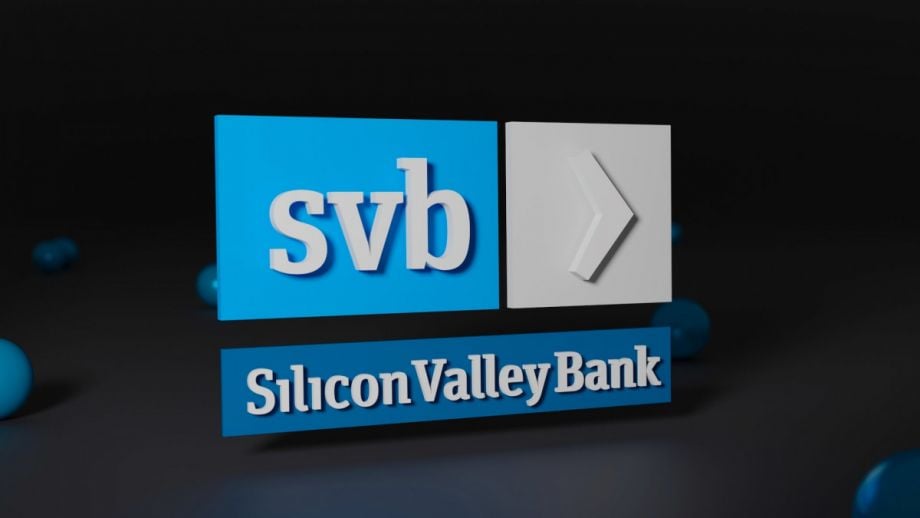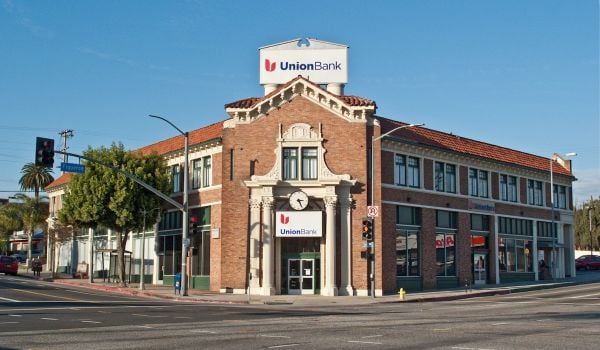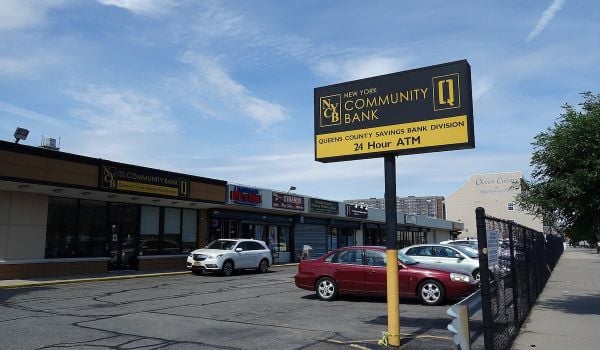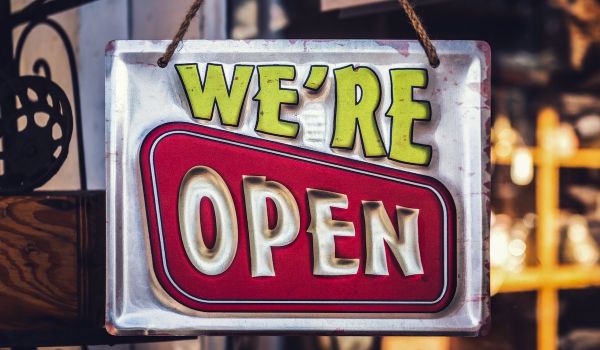Banking has never been about avoiding risk. It’s about managing risk. For years, especially during an era of near-zero interest rates that lasted about a decade, it appeared Silicon Valley Bank and its ilk were managing risk well. But now it should be clear that focusing mostly on wealthy people and the startups in which they invest is not a sign of good risk management at a bank.
The sudden collapses of Silicon Valley Bank, Silvergate Bank and Signature Bank of New York are the consequence of relying so heavily upon clients with unproven startups, the funds that invest in those startups, and the wealthy people who invest in those funds.
It makes sense for banks to do some amount of business with startups and their investors. In fact, it might be better for society if a much greater number of banks were willing to do business with earlier stage businesses. If that were the case, the struggles hitting the tech sector might have been absorbed more easily across many more institutions instead of falling so squarely on a handful of banks.
But those three banks, and a handful of others now in the hot seat, threw too many of their eggs into the startup basket, including and especially cryptocurrency startups like the (allegedly) fraudulent FTX.
If you bank with a credit union, a more typical community bank, a community development financial institution or even a large bank, your bank is most likely not as reliant on that toxic mix of tech sector startups and their wealthy investors. So you don’t have as much to worry about. Your bank isn’t in the same situation. Probably.
You don’t have to take my word for it — check out your bank’s website, social media or other marketing to see for yourself if it’s been pushing hard to attract startups as clients. Startups aren’t just risky investments. What we’re seeing now is how they can also pose a risk if you rely so heavily on them — as well as startup investors — as depositors.
In other words, one of the reasons Silicon Valley Bank collapsed was because as a bank, it didn’t do business with more communities outside of startups and startup investors (and certain industries with strong social ties to them, like wine). As those clients flourished, the bank flourished, and when things went sour for them, they went sour for the bank.
Most startups aren’t yet generating positive cash flow. Most startups, especially in Silicon Valley, raise cash from angel investors or venture capital funds, which they start spending on salaries and operations until the next round of capital raising. That well of easy money dried up over the past few years due to a combination of the pandemic and, more recently, rising interest rates. But thousands of startups kept burning through cash, drawing down on deposit balances at Silicon Valley Bank.
In the cases of Silvergate Bank or Signature Bank of New York, those banks in particular pushed hard to do business with cryptocurrency exchanges. Some of those firms are also startups with no proven cash flow. But more to the point, cryptocurrency exchanges were withdrawing cash at even higher rates as clients of the exchanges divested from cryptocurrency. Silvergate lost more than two-thirds of its deposits in the fourth quarter of 2022 after cryptocurrencies collapsed.
If Silicon Valley Bank or the other banks had a more diverse deposit base, the evaporation of cryptocurrency exchange deposits or slow burn of startup deposits might have been cushioned by influxes in other sectors or customer segments. But as it was, Silicon Valley Bank’s deposit base started to shrink, though more slowly at first.
When a bank’s deposit base starts to shrink, it initially has a few options for what to do. It can borrow from somewhere else to replace the deposits it lost on the liabilities side of its balance sheet, or it can sell off some loans or other investments on the asset side of its balance sheet. Either way, it has to keep its assets equal to its liabilities — that’s why they call it a balance sheet.
One option is wholesale borrowing — borrowing from other banks, including the Federal Reserve or the Federal Home Loan Bank system. In 2022 alone, as startups started burning through cash with little to no new investor dollars coming in, Silicon Valley Bank went from zero Federal Home Loan Bank borrowings to $15 billion by the end of the year. But each bank has a limit on what it can borrow from its regional Federal Home Loan Bank, a limit based on a number of factors including the size of the borrowing bank. Silicon Valley Bank had reached that limit. Silvergate Bank also made industry headlines last year for rapidly approaching its Federal Home Loan Bank borrowing limit.
As a next option, there’s the Federal Reserve’s main bank lending tool, known as the “discount window” — but for reasons that still aren’t fully understood, borrowing from the discount window carries a certain stigma, like it’s a sign that a bank is on its last ropes.
Another option for when a bank’s deposit base shrinks quickly is selling off assets — loans, stocks, bonds, real estate, other investments on its balance sheet. By selling off some assets, the bank can make sure the asset side of its balance sheet matches the liabilities side where deposits lie. But Silicon Valley Bank would have had a hard time selling its loans, since so many of those loans are to startups and most banks lack the willingness or ability to work with such a large concentration of those kinds of clients.
It also didn’t make as many loans as a bank of its size typically does. Startups flush with venture capital cash generally don’t need or want to take out loans. At the end of 2022, Silicon Valley Bank had $73.6 billion in active loans across a portfolio of $209 billion in assets. So only about a third of its portfolio were loans.
Fifth Third Bank or M&T Bank, both about the same size as Silicon Valley Bank, have 60-70% of their portfolios in loans. Community banks and credit unions typically have 70%, 80% or even close to 90% of their portfolios in loans.
If Silicon Valley Bank had been willing to make more “vanilla” loans to homeowners or for affordable housing or a wider array of small businesses, it might have been able to sell some or more of those assets to other banks or investors.
But instead, as long as deposits were coming in from startups raising endless rounds of private investments, Silicon Valley Bank ended up buying up Treasury bonds and mortgage-backed securities over the past decade, during the era of near-zero interest rates. All banks purchase some Treasury bonds and mortgage-backed securities, since they’re generally considered safe, reliable long-term assets. But because they were purchased during periods of such low interest rates, and interest rates are now suddenly higher, if the bank had to sell those bonds and securities it would have to sell them at less than their original value. And it did, selling $21 billion in bonds at nearly $2 billion less than face value. That loss spooked the bank’s investors, who started selling off their shares in the bank.
Consider, also, that many of Silicon Valley Bank’s depositors are also financial advisors. At least 5,949 of the bank’s accounts are custodial accounts, meaning they’re cash managed by venture capital funds and other professional, registered investment advisors. Word about the bonds sold at such a huge loss spread quickly through networks of financial professionals, who started pulling out deposits held by their funds and telling startups in their portfolios to pull out their deposits.
All told, Silicon Valley Bank’s depositors requested withdrawals of $42 billion in deposits just last Thursday alone — and that’s all in addition to so many startups that had already been drawing down their deposits more slowly over the previous year.
In the end, it was a classic “bank run.” Based on the assets it could have potentially sold off, Silicon Valley Bank couldn’t have matched the amount requested in deposit withdrawals. Part of the reason the FDIC was created in the midst of the Great Depression was to intervene in this situation and make sure at least the average person could recover what they had in deposits in the bank.
That’s why the FDIC’s deposit insurance technically only covers up to $250,000 per depositor. The FDIC temporarily seizes a failed bank, sends a check to each depositor for what they’re owed up to $250,000, then it has to figure out what to do with the rest of the bank’s balance sheet. It might auction off the failed bank’s assets bit by bit, or all at once to another bank. It could keep the proceeds of those sales or use the proceeds to pay back those who held deposits above the insurance limit, or pay back former shareholders of the failed bank.
Since the 2008-2009 financial crisis, the FDIC has preferred to make sure no one loses any deposits, even the deposits over and above the deposit insurance limit. Silicon Valley Bank and Signature Bank are also unusual in that 90% or more of the deposits they held were above the deposit insurance limit — a function of serving mostly startups and startup investors with millions in each of their accounts. Most banks have just 40-60% of their deposits above the deposit insurance limit, since many businesses and also government entities need to keep millions in their accounts on a daily basis just for cash flow reasons, such as payroll.
The merits and legality of the methods used will be debated ad nauseam for years among banking industry observers, but the solutions put forth over the weekend from the Federal Reserve and FDIC do resolve some of the more potentially disastrous collateral damage. Thousands of founders and even more startup workers gained access to payroll payments and the rest of their companies’ deposits normally as of Monday morning. Same for the many philanthropic foundations and grantees who were relying on the former Silicon Valley Bank to process grant payments.
Congress will not be called upon to pass legislation funding a bailout package to the shareholders and executives of Silicon Valley Bank or Signature Bank, both of which functionally no longer exist as corporate entities. The Federal Reserve and U.S. Treasury are using previously-authorized emergency funds to provide any necessary liquidity for depositors of the failed banks to have access to their deposits. Any losses incurred by the FDIC’s deposit insurance fund will be replaced by industry-wide “special assessments,” meaning all other banks will contribute to replace any deposit insurance funds that can’t be replaced by the proceeds of the FDIC selling the assets or deposits from Silicon Valley Bank or Signature Bank to other institutions.
If all those thousands of startups had been distributed across a much greater number of banks or maybe if they banked at a bank that also made more “vanilla” home mortgage loans or small business loans that could have been sold off a balance sheet in a pinch for less of a discount, the slow decline of startup capital cash flow might have been absorbed more easily and much more quietly. A bunch of community banks might have had a bad quarter or bad year, but they would have had the collective ability to absorb a large number of limited losses per bank.
The question of why only one or a handful banks have been allowed to concentrate so much of their deposits and assets in risky sectors like tech startups and startup investors is a huge question for regulators and the legislators who are supposed to hold regulators accountable.
Doing business with startups doesn’t have to be for all banks, but maybe more banks could or should be involved in supporting these sectors and regulators have ways to encourage more of them to do so, and to do it as part of a more comprehensive portfolio serving a broader swathe of people and communities. But of course, public officials can’t be entirely to blame when handsomely-paid banking industry lobbyists are whispering in their ears.
This article is part of The Bottom Line, a series exploring scalable solutions for problems related to affordability, inclusive economic growth and access to capital. Click here to subscribe to our Bottom Line newsletter.

Oscar is Next City's senior economic justice correspondent. He previously served as Next City’s editor from 2018-2019, and was a Next City Equitable Cities Fellow from 2015-2016. Since 2011, Oscar has covered community development finance, community banking, impact investing, economic development, housing and more for media outlets such as Shelterforce, B Magazine, Impact Alpha and Fast Company.
Follow Oscar .(JavaScript must be enabled to view this email address)


















